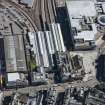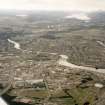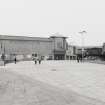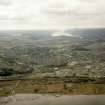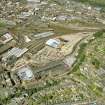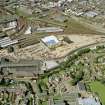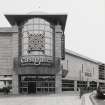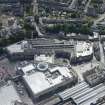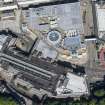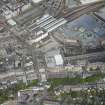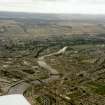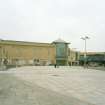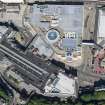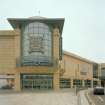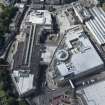Inverness, Crown Road, Eastgate Shopping Centre
Shopping Centre (20th Century)
Site Name Inverness, Crown Road, Eastgate Shopping Centre
Classification Shopping Centre (20th Century)
Alternative Name(s) Falcoln Square
Canmore ID 181887
Site Number NH64NE 638
NGR NH 6687 4543
NGR Description Centred NH 6687 4543
Datum OSGB36 - NGR
Permalink http://canmore.org.uk/site/181887
- Council Highland
- Parish Inverness And Bona
- Former Region Highland
- Former District Inverness
- Former County Inverness-shire
NH64NE 638 centred 6687 4543
NH 6687 4543 A two-phased archaeological evaluation and excavation were conducted prior to commercial development. The primary objectives were to identify any significant archaeological remains relating to the 1855 railway and determine the presence or absence of the medieval town ditch.
The trackways, platforms and buildings associated with the former 1855 Nairn to Inverness railway were identified and recorded, as were later railway additions and more modern site levelling episodes.
In the S area of the development site, various foundations and cellars relating to buildings dating between 1765 and the 1930s were recorded.
Two ditches were identified and recorded in the SW area of the development site. A U-shaped ditch was oriented approximately N-S and was cut by a broad V-shaped ditch oriented approximately E-W. The U-shaped ditch is tentatively equated to the medieval town or burgh ditch. The ditch may have been kept clean and recut until the 13th-15th century when it started to infill with silt-rich turves, perhaps derived from an eroding turf wall or cultivated backlands. It then appears that the ditch was deliberately backfilled with sands and gravels. The V-shaped ditch fills were predominantly coarse sand and gravels. It is probable that the ditch was infilled during the 15th-16th century. No historical records could be located that referred to a ditch following this orientation, and its function remains unknown.
A large keyhole-shaped pit was recorded c 5m to the W of the U-shaped ditch. The pit was lined with mixed yellow silt and burnt organic matter with cobbles and burnt clay at its base. The burnt organic matter comprised carbonised seeds and fragments of wood. A radiocarbon date from a charred barley grain dates the malt-corn-drying kiln to the late 12th or early 13th century.
Sponsor: Royal & Sun Alliance Property Investments.
C Ellis 2000.































